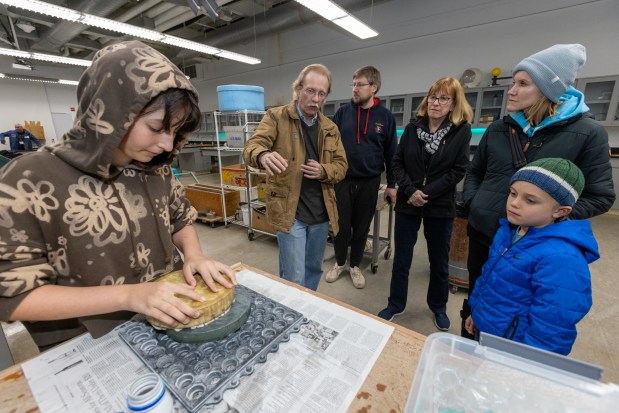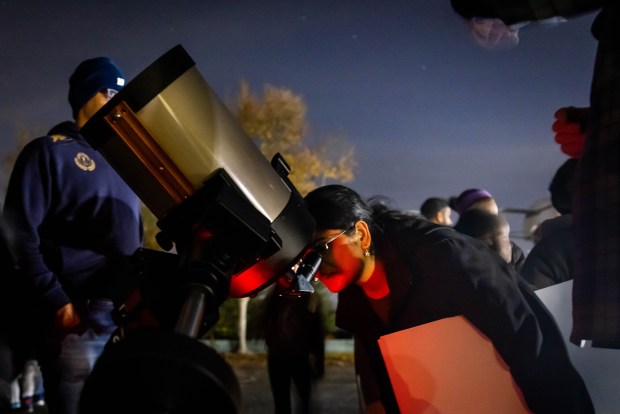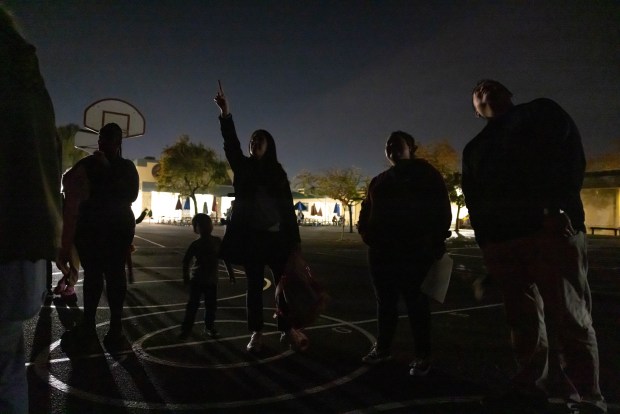On a cold overcast night at the edge of the California Delta, members of the Mount Diablo Astronomical Society tilted their faces toward the darkening sky, willing the growing cloud banks to clear.
They had hoped to focus their telescopes on Jupiter and its four Galilean moons — Io, Europa, Ganymede and Callisto — and on Saturn. And then when the skies were darkest, Mercury. Also on the expansive menu that December night were a platter of star clusters, a serving of galaxies, a flight of binary stars and an amuse bouche of nebulas.
Unfortunately on this particular chilly evening, the clouds stubbornly refused to dissipate – a hazard of late fall and wintertime viewing in the Bay Area – and the stargazers were left wanting. But like so many people over the eons who have searched the heavens for flashes of light, the Mount Diablo star seekers were not discouraged.
Stargazing puts life in perspective, says Ken De Silva, the society’s outreach coordinator for East Contra Costa County.
“You worry about day to day things,” De Silva says, “but then look up and see hundreds of thousands of stars, most of which have solar systems with thousands of planets, any of which could support life. It just makes things feel easier.”

While the secrets of the ocean lie tantalizingly close, it is the distant, starry skies that prove the most accessible, brought into focus with the assistance of a telescope or a pair of binoculars — and a little help from friends.
The Bay Area embraces a score of astronomical societies and clubs from Mountain View to Oakland, Pleasanton and Point Reyes. Some of the groups were founded decades ago. Others are more recent. But they all have the same goal – to roam among the stardust and share their love of the sky.
The Eastbay Astronomical Society is one of the Bay Area’s oldest, founded more than 100 years ago by a group of scientists and like-minded residents. The society has long been associated with the Chabot Space & Science Center observatories. Society president Richard Ozer says the group takes an active role at the observatories, which house three telescopes — Leah, Rachel and Nellie — serving as docents and overseeing the public telescope building workshops that have existed almost as long as the society itself.
Ozer’s own interest in space began when he was a kid. He built his own telescope at age 12 and spent his free evenings at his high school’s telescope dome. These days, Ozer runs a tech company in Oakland, but on Friday evenings, you’ll find him leading the telescope building workshops at Chabot. The workshops are free, although participants must pay for their own materials. It takes about a year to grind and polish the mirrors and lenses and build a working telescope.

People often are surprised at just how much of the vast universe you can see even with simple magnification. And like many hobbies, stargazing can take hold quickly and strongly.
“Looking at Saturn got me in the first time I saw it,” Ozer says.
De Silva was more of a latecomer to stargazing. He had worked in parks and recreation most of his career, and when he retired, he wanted to continue to work with young people. He had an interest in the stars, but it was really the kids who motivated him to get involved with the group. The Mount Diablo Astronomical Society, like many others, work with school-aged children, introducing them to the stars and holding stargazing parties at schools in Clayton, for example, and Brentwood. The group also works closely with Girl Scout troops, helping the girls earn their science badges.

The society’s roots lie with a program started in 1956, as the space race began to take off. Operation Moonwatch, also called Project Moonwatch, was launched by the Smithsonian Astrophysical Observatory and enlisted citizen scientists in observing the skies and reporting satellite sightings and movements. The program tapped into amateur astronomy clubs as well as those interested in science and national pride. Using telescopes they had made or purchased at Radio Shack, observers spent hours every night peering at the sky and reporting their findings. The Mount Diablo Astronomical Society was formed by several of those moonwatchers the next year.
One of the goals of these clubs and societies is to engage both children and adults in the hobby, opening up new vistas and reinforcing the magic of science. Much like bird watchers or stamp collectors, these nighttime voyeurs often keep track of the astral phenomena they’ve witnessed and check off bucket list items.
Many of these groups were formed at a time when joining associations and clubs was how one socialized, says Peninsula Astronomical Society president Gary Baker. “Today, we have folks who are curious and want to learn more about astronomy,” he says, “but many of them want to give back and share their love of the sky.”
The Peninsula society operates the Foothill College observatory, which opened in 1965 on the Los Altos Hills campus, and offers stargazing events and public lectures. Baker was introduced to the society via those lectures 30 years ago. He’s been a member ever since.
“For me, it’s about the unknown,” he says. “There’s so much out there, and I have the desire to learn more about it.”
Meanwhile, Livermore’s Tri-Valley Stargazers was founded by a few Lawrence Livermore National Laboratory employees in 1979 and quickly evolved to include the general public, says Eric Dueltgen, the club’s vice president and an industrial hygienist for Sandia National Laboratories. Like many of these associations, the Stargazers host star parties and have an assortment of telescopes members can rent and try out before buying their own.
Anyone can get into stargazing. “All you have to do is look up,” Dueltgen says, but “it helps to find a place that’s dark.”
Early sunsets coupled with crisp, cloudless nights can offer some of the best viewing experiences of the year, but finding that dark spot isn’t as easy as it once was. Street lights, neon signs and the illumination that emanates from urban and suburban areas muddies the star viewing. Many astronomical associations are working with cities to reduce the glare by changing their lighting regulations. West Marin star fans are petitioning to create a DarkSky zone, one of only a handful in the country where street lighting is reduced and regulated, allowing the stars to shine through.

If you’re interested in becoming a stargazer, members of the clubs and societies offer these first steps:
Check out a star party: Most astronomy societies host public events several times a year, where you can look through their telescopes and learn about what you’re seeing. Search for a club on the Jet Propulsion Laboratory’s Night Sky Network at https://nightsky.jpl.nasa.gov. To find the societies mentioned above, visit https://pastro.org/ (for the Peninsula group), www.trivalleystargazers.org/, https://eastbayastro.org/ and https://www.mdas.net/ (Mount Diablo).
Start with a pair of binoculars. You’ll be able to see most of the planets and a lot of space objects with them. Don’t buy a telescope until you know what you’re doing. Ozer says people often go for the most expensive and technical ones, then get frustrated when they can’t operate them. Wait until you’re comfortable with telescopes and know what’s on the market.
Buy a star atlas or download a stargazing app such as Stellarium, SkyView or SkySafari, so you know what you’re looking at.
Intrigued by Saturn’s rings or Jupiter’s moons? Then join a club. Memberships are inexpensive, usually less than $30 a year. Astronomical society members are happy to direct you to prime viewing spots. They hold private stargazing parties; you’ll have access to a wealth of information; and some clubs have a lending program, so you can try different types of telescopes and see what works best for you.
Source: www.mercurynews.com
